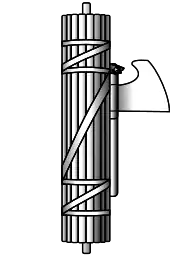Stefano Cavazzoni | |
|---|---|
 | |
| Minister of Labour | |
| In office 31 October 1922 – 27 April 1923 | |
| Prime Minister | Benito Mussolini |
| Personal details | |
| Born | 1 August 1881 Guastalla, Kingdom of Italy |
| Died | 31 May 1951 (aged 69) Milan, Italy |
| Political party | |
Stefano Cavazzoni (1881–1951) was an Italian politician who served as the minister of labour between October 1922 and April 1923. He was also a member of the parliament and senate.
Biography
Cavazzoni was born in Guastalla, Reggio Emilia, on 1 August 1881.[1] He was a member of the Italian People's Party being one of its right-wing group leaders.[2] Following the general elections in November 1919 and also, in 1921 he was elected to the parliament.[1] He was named as minister of labour on 31 October 1922 in the first cabinet of Benito Mussolini and remained in office until 27 April 1923.[1]
He left the Italian People's Party and established a group entitled the National Center together with Paolo Mattei Gentili, Aristede Carapelle, and Giovanni Grosoli in 1924.[3] It was a Catholic group and was close to fascism.[3] In 1924 Cavazzoni was again elected as a deputy.[1] On 21 January 1929 he was appointed senator.[1] In May 1930 he became the president of the Istituto Centrale di Credito.[3] The same year the National Center ended its activities.[1]
From 1933 to 1943 Cavazzoni was the representative of the government on the board of directors of the Università Cattolica del Sacro Cuore in Milan.[4] In 1940 he became a member of the National Fascist Party.[1] Following the fall of fascism he was tried in the High Court of Justice at the Senate and was found guilty for his political activities in October 1945.[1]
Cavazzoni died in Milan on 31 May 1951 as a result of angina which he had experienced since 1939.[1]
Views
Cavazzoni was a devout Catholic. He was among the clerico-fascists in the period of Fascist rule in Italy.[5] While serving as a senator he argued that the Fascist labour legislation should be consistent with Catholic social principles.[4] During the Fascist rule he believed that collaboration with Fascists was the principal way of achieving the best national and religious outcomes.[4]
References
- 1 2 3 4 5 6 7 8 9 Francesco Malgeri (1979). "Cavazzoni Stefano". Dizionario Biografico degli Italiani (in Italian). Vol. 23.
- ↑ Albert C. O'Brien (Autumn 1971). "The "Osservatore Romano" and "Fascism": The Beginning of a New Era in Church-State Relations, October 1922-July 1923". Journal of Church and State. 13 (3): 460. JSTOR 23914186.
- 1 2 3 Mario Robiony (2018). "The Anatomy of a Banking Crisis. The Case of the Catholic Banks of the Veneto Region in the Late 1920s". The Journal of European Economic History. 47 (3): 49. ProQuest 2162718997.
- 1 2 3 Richard A. Webster (1959). The Cross and the Fasces: Christian Democracy and Fascism in Italy (PhD thesis). Columbia University. pp. 153, 177–178. ISBN 9781084563254. ProQuest 301873540.
- ↑ John Pollard (2011). "Fascism and Religion". In António Costa Pinto (ed.). Rethinking the Nature of Fascism. London: Palgrave Macmillan. p. 153. doi:10.1057/9780230295001_6. ISBN 978-0-230-29500-1.
External links
 Media related to Stefano Cavazzoni at Wikimedia Commons
Media related to Stefano Cavazzoni at Wikimedia Commons
